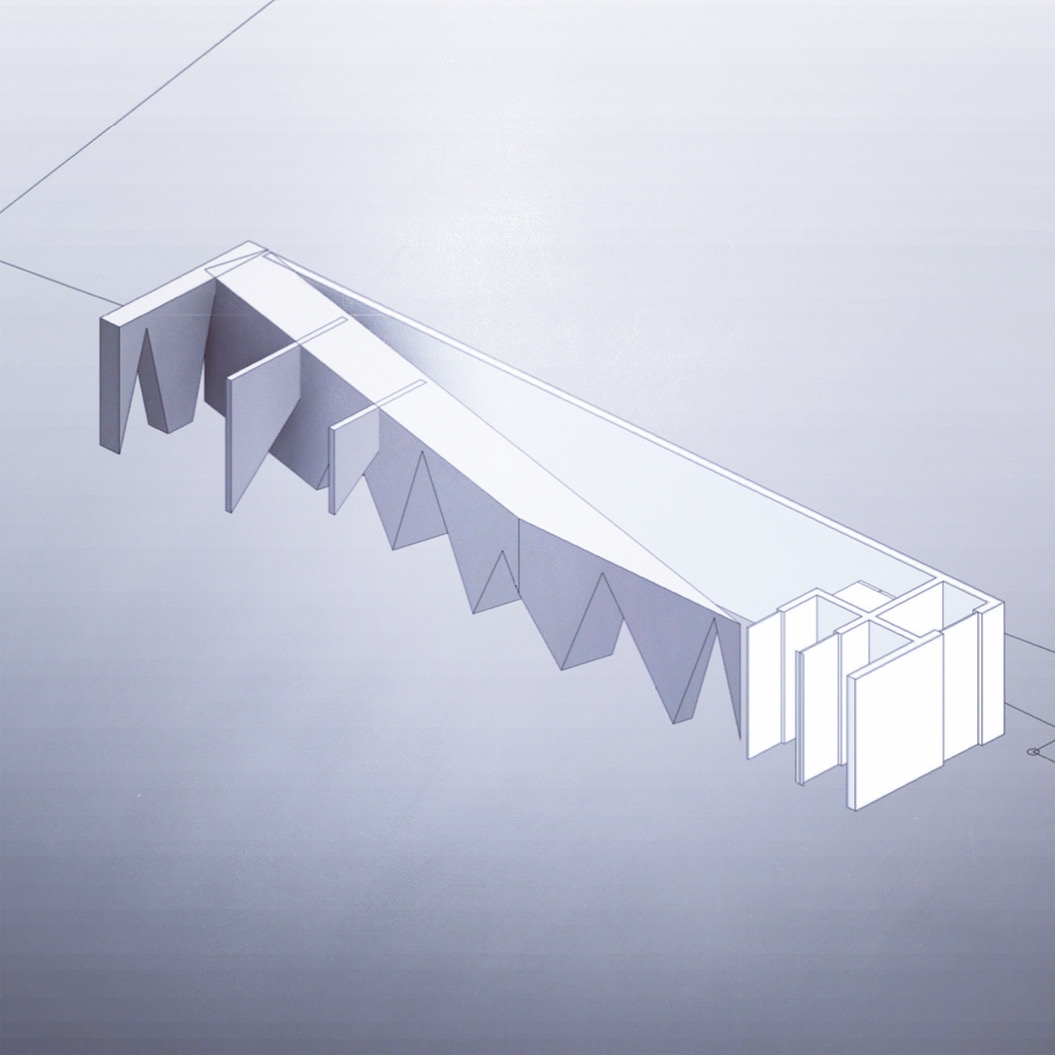連続的に変化する厚み
連続的に厚みが変化する壁など見たことが無い、それはその必要性が無いからだろう。構造体としての壁や環境性能としての壁では一定の厚みが求められる。それは厚みに変化があると容易に計算が成り立たないからである。だから、厚みを変えるとしたら、それは意匠的な要因としての付加物になる。
付加物となると忌み嫌われる。モダニズムの倫理観では付加物は許されない。シンプルで余分な物が無い様が尊い。それがポストモダンになり、アイロニーとして付加物が利用され、ポストモダンの後は付加物の造形だけがテクノロジーの発達により構造体そのものとして実現可能になったが、一般的にはまだモダニズムの倫理観が残っている。
だから、壁の厚みの変化を付加物ではなくて、構造体そのものとして扱えば良いとなるが、それが一般的では無く、またシンプルで余分な物が無い様が求められるので、一定の厚みの壁ばかりになる。
空間の隔たりや繋がりに壁の厚みが関係すると考えており、その壁の厚みの変化が不連続に所々で発生するよりは、連続的に壁の厚みが変化して、繋がりと隔たりとその中間の隔たりだか、繋がりだかがわからないような状態まで実現する方が空間としては複雑で面白くなるはずである。
"Continuously changing thickness"
I have never seen a wall whose thickness changes continuously, probably because there is no need for it. A certain thickness is required for the wall as a structural body and the wall as environmental performance. This is because the calculation cannot be easily established if the thickness changes. Therefore, if the thickness is changed, it becomes an additive as a design factor.
It is disliked when it comes to additions. Additions are not allowed in modernist ethics. It is precious that it is simple and there are no extra items. It became post-modern, the additive was used as irony, and after the post-modern, only the modeling of the additive became feasible as a structure itself due to the development of technology, but in general, the ethics of modernism is still common. Is left.
Therefore, it is sufficient to handle the change in wall thickness as the structure itself, not as an additive, but that is not common, and it is required to be simple and free of excess, so a certain thickness Only walls.
We think that the wall thickness is related to the space separation and connection, and rather than the wall thickness changes occurring discontinuously in some places, the wall thickness changes continuously and the connection and separation between It would be more complicated and interesting as a space to realize a state in which it is difficult to understand whether there is a gap or a connection.


